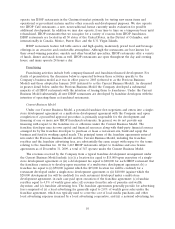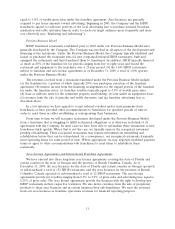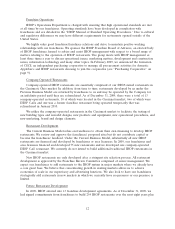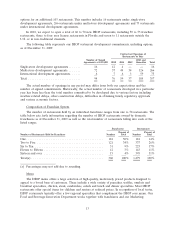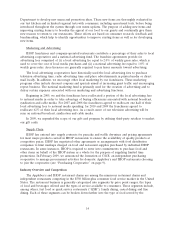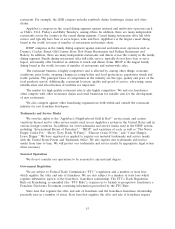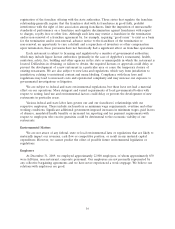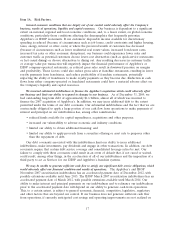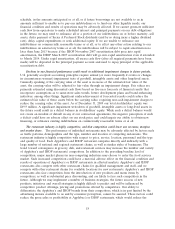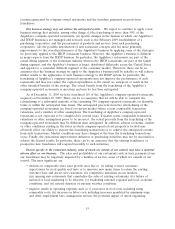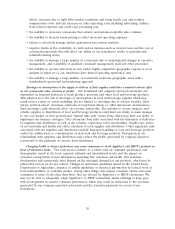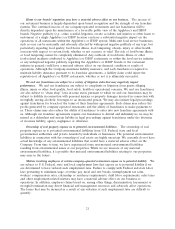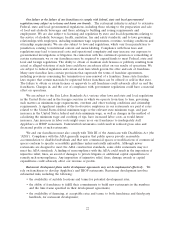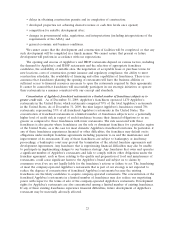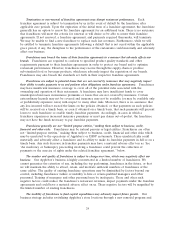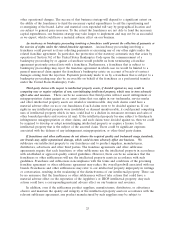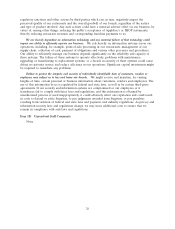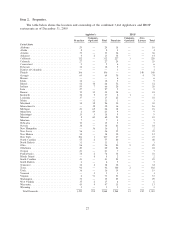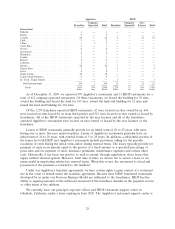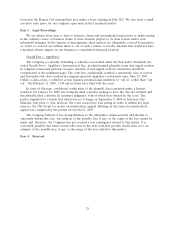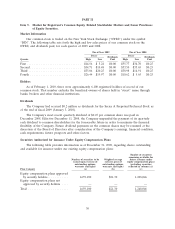IHOP 2009 Annual Report Download - page 39
Download and view the complete annual report
Please find page 39 of the 2009 IHOP annual report below. You can navigate through the pages in the report by either clicking on the pages listed below, or by using the keyword search tool below to find specific information within the annual report.efforts, increases due to tight labor market conditions and rising health care and workers
compensation costs; and (iii) increases in other operating costs including advertising, utilities,
lease-related expenses and credit card processing fees;
• the inability to open new restaurants that achieve and sustain acceptable sales volumes;
• the inability to increase menu pricing to offset increased operating expenses;
• failure to effectively manage further penetration into mature markets;
• negative trends in the availability of credit and in expenses such as interest rates and the cost of
construction materials that will affect our ability or our franchisees’ ability to maintain and
refurbish existing stores;
• the inability to manage a large number of restaurants due to unanticipated changes in executive
management, and availability of qualified restaurant management, staff and other personnel;
• the inability to operate effectively in new and/or highly competitive geographic regions or local
markets in which we or our franchisees have limited operating experience; and
• the inability to manage a large number of restaurants in diverse geographic areas with a
standardized operational and marketing approach.
Shortages or interruptions in the supply or delivery of food supplies could have a material adverse effect
on our system-wide sales, revenues or profits. Our franchised and company-operated restaurants are
dependent on frequent deliveries of fresh produce, groceries and other food and beverage products.
This subjects us to the risk of shortages or interruptions in food and beverage supplies which may
result from a variety of causes including, but not limited to, shortages due to adverse weather, labor
unrest, political unrest, terrorism, outbreaks of food-borne illness or other unforeseen circumstances.
Such shortages could adversely affect our revenue and profits. The inability to secure adequate and
reliable supplies or distribution of food and beverage products could limit our ability to make changes
to our core menus or offer promotional ‘‘limited time only’’ menu items, which may limit our ability to
implement our business strategies. Our restaurants bear risks associated with the timeliness of deliveries
by suppliers and distributors as well as the solvency, reputation, labor relationships, freight rates, prices
of raw materials and health and safety standards of each supplier and distributor. Other significant risks
associated with our suppliers and distributors include improper handling of food and beverage products
and/or the adulteration or contamination of such food and beverage products. Disruptions in our
relationships with suppliers and distributors may reduce the profits generated by company-operated
restaurants or the payments we receive from franchisees.
Changing health or dietary preferences may cause consumers to avoid Applebee’s and IHOP’s products in
favor of alternative foods. The food service industry as a whole rests on consumer preferences and
demographic trends at the local, regional, national and international levels, and the impact on
consumer eating habits of new information regarding diet, nutrition and health. Our franchise
development and system-wide sales depend on the sustained demand for our products, which may be
affected by factors we do not control. Changes in nutritional guidelines issued by the United States
Department of Agriculture, issuance of similar guidelines or statistical information by federal, state or
local municipalities, or academic studies, among other things, may impact consumer choice and cause
consumers to select foods other than those that are offered by Applebee’s or IHOP restaurants. We
may not be able to adequately adapt Applebee’s or IHOP restaurants’ menu offerings to keep pace
with developments in current consumer preferences, which may result in reductions to the revenues
generated by our company-operated restaurants and the franchise payments we receive from
franchisees.
20


